| Fall 2006 | Spring 2007 | Summer 2007 | Fall 2007 | Spring 2008 | Summer 2008 | Fall 2008 | Spring 2009 | Summer 2009 | Fall 2009 |
|---|---|---|---|---|---|---|---|---|---|
EDUC 998 |
EDUC 999 |
||||||||
EDIT 772 |
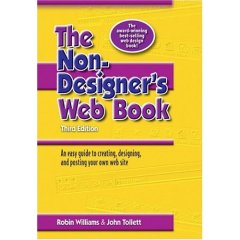 |
|---|
The purpose of the electronic portfolio course is to provide doctoral students with the necessary tools for creating an electronic portfolio. Knowing my limitations with multimedia software, I readily signed up for this class with the hope that not only would I learn to manage my own portfolio, but that I would find other applications for the Dreamweaver software. Since the course, I have helped two colleagues develop their e-portfolios and I have given a fresh look to Dr. Marjorie Haley's web site for her Multiple Intelligences Research Study.
Creating the original version of my e-portfolio was nevertheless, quite a challenge. My goal was to develop a homepage that was easy to navigate and that represented my personal philosophies. To accomplish this goal, I decided to make a connection between my passion for competitive cycling and my strong belief that improbable possibilities are worth pursuing. As a fan of professional cycling and as an amateur racer, it is my opinion that is competitive cycling is probably one of the most difficult sports both mentally and physically. It requires a strong dedication to a training program that for most athletes (both pro and amateur) may never result in that "big win." I have trained and raced in all sorts of weather conditions. Like many in the sport, I have crashed and I have been injured. You might ask why anyone would even want to race competitively. The answer is the desire to turn an improbable possibility into a probable reality.
When I look at the picture of the bike racers on my index page, I am reminded of how difficult it is to keep working toward a goal when the mind and body are well aware of their limitations and imperfections. Yet limitations and imperfections are a part of life. The field of world language education is no different. There are problems with the equitable distribution of funding, student resources, and teacher training programs. Yet, even with these limitations and imperfections, I am highly motivated to pursue improbable possibilities with the hope of making a difference in my field.
Return to top
EDUC 800 |
 |
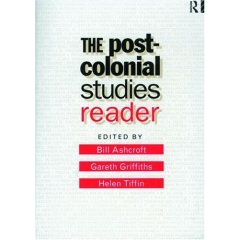 |
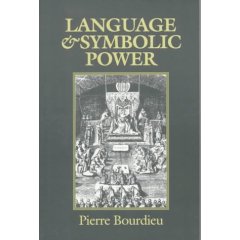 |
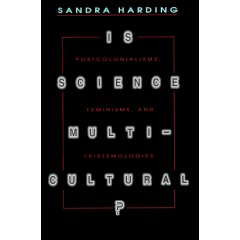 |
|---|
This course has completely changed my perspective of what I would like to accomplish during my doctoral studies. I took this course during my first semester in the program. Looking back to those early weeks, I questioned my decision to pursue a PhD. I was both intimidated and skeptical. I knew very little about topics such as critical race theory and post colonial studies. I wondered how these epistemologies and others represented by the work of Gloria Ladson Billings, Jerome Bruner, Benjamin Whorf, and Sandra Harding had anything to do with my interests in developing curriculum and instruction in foreign languages. It would take the full 15 weeks for me to understand that these new ways of knowing have everything to do with world language education. It is after all, our use of language that connects our inner most beliefs with our day to day realities.
One of the course requirements was to maintain a personal journal with my reactions to the readings. Re-reading these entries, the path of growth in my thinking is evident. Initially I struggled to make any connections between the readings. This was mostly because I did not have a strong understanding of the history of the natural and social sciences. I also was not familiar with the different lenses of feminism, the idea of "whiteness," and the enduring Euro centric influences that continue to infiltrate our educational policies. In order to better understand the readings, I spent quite some time investigating these topics. By mid-semester, I was responding to the readings both philosophically and emotionally. I have included a link to my seventh journal entry because it represents a pivotal change in my thinking.
By the end of the semester, I found myself asking questions such as whose language is legitimate. And, why do world language programs continue to advance Western languages at the expense of developing programs for Eastern languages. My final presentation on cultural capital and the work of Pierre Bourdieu allowed me to explore language theorists and the differences between the positivist objectivity (the outer experiences of language that seek one reality or truth) and the post-modernist subjectivity (inner experiences of language learning that provide for multiple realities). It was through this understanding that I synthesized the course readings in the final paper.
How exactly have my ways of knowing and doctoral goals changed? Prior to this course, I believed that our current educational programs were adequately meeting the needs of minority students. I never questioned who developed these programs or exactly how they were addressing the inequities in the system. I would have thought that professional development programs such as that of Ruby Payne, were effectively preparing our teachers to teach in our nation’s diverse classrooms. With a new understanding for critical perspectives in education, I now believe that I should question programs that do little to change the system and that promote the power and authority of white, middle-class, Western views. If minority groups are ever to earn the cultural, linguistic and social capital that they deserve, I will have to work for a systemic change in my field.
Return to top
EDUC 805 |
|---|
Fall 2006
There were two underlying themes in the Doctoral Seminar throughout the Fall 2006 semester. The first theme led me to question my ways of thinking about what I might research and how I might research it. As the weeks passed, there were several underlying themes from each of the professors. We were told to begin our journey into research by following our passions. But, we were well advised to keep an open mind and consider the possibilities of making connections with other disciplines or with other researchers from all corners of the globe. The second theme was given a name by Dr. Goor as "The Community of Scholars." Before this first semester in the program, I had never really considered the differences between pursuing a Masters and pursuing a PhD. With each presenter, I came closer and closer to the understanding that I am now on a journey of transformation. By the end of this journey, I shall become more than a receptor of knowledge. I shall have the skills and capabilities to be a creator of knowledge--a scholar. Along with those capabilities comes great responsibilities. Therefore, my journey through the PhD program must be more than fulfilling course requirements, doing research and defending a dissertation. It must also include academic and professional growth that will prepare me for the responsibilities of membership in "the community of scholars."
Spring 2007
Many students consider the Doc Seminar as a useful means to get to meet and greet some of the faculty. The rest of the work in the course is considered part of doing what is required so that we can check another requirement off the list. This definitely was not supposed to be the course that would help me to find my way. Yet, that is exactly what happened in a few very short weeks.
By mid-semester, I was becoming filled with angst. While I knew that my major would be Multicultural/Multilingual Education and my minor would be Instructional Technology, I could not see the intersection of these two fields with respect to world languages. A few weeks later, a panel of doctoral students gave very sound advice on the importance of relating course projects to my eventual dissertation study. I wondered how I would do that when I still didn't’t have an official program of study or a complete portfolio committee. Why couldn't’t I see the dots that I needed to connect? The Blackboard discussions were very helpful as I learned about the common fears and shared angst of my peers. I realized that we are all in the midst of our own growth process. Connecting the dots is a process, not a singular act that is finalized by creating a program of study. Since this realization I have been very pro-active in fostering my own growth by connecting coursework to professional opportunities. It’s happening. Thanks to this one-credit course, I believe I am now finding my way in a wonderful community of scholars.
Return to top
Spring 2007
EDUC 802 |
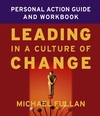 |
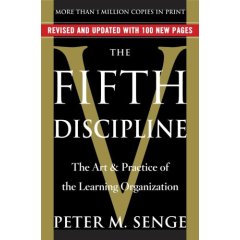 |
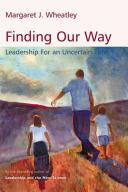 |
|---|
In early 2007, if anyone had told me that good leadership is all about quantum physics, I would have laughed and brushed that statement aside. I believed that leadership was the ability to guide a group of people to complete a task. Although difficult to admit, I have been the type of leader who enjoys being in control, so I saw a leader as one who is able to control any variables that might inhibit progress toward completion of a task. While I would still somewhat agree with this positivist perspective of leadership, I would change one word in particular, the word "control."
The change in my thinking about leadership and control came early on in the semester. As we read Fullan's Leadership in a Culture of Change," I began to understand the complexities of a culture of change. Leadership is more than getting people do something or to think in a certain way. A culture of change includes the concept of what Senge defines as "mental models" in his book, The Fifth Discipline. In essence, we cannot lead others until we can see the organization and the tasks at hand through multiple lenses. Before we can understand those we seek to lead, we must first understand our own prejudices and biases. This is not such an easy thing to do and all too often, leaders fail to self-reflect. The result is often an inaccurate view of an organizational problem. And, when we don't fully understand the problem, we unfortunately devise solutions that are destined to fail or as Senge says "today's solutions become tomorrow's problems."
The final reading in the course was Margaret Wheatley's Finding Our Way. For me, the Wheatley readings and the humanist approach were the final link to what I now perceive as my role as a leader. Although her writing style is less conventional than that of Fullan and Senge, her ideas are actually quite similar. In my final paper for the course, I detail the path of my thinking throughout the semester and how all three of these writers believe that Complexity Theory (formally Chaos Theory) best describes a "culture of change." We cannot predict or "control" all the variables involved with implementing change. Furthermore, as Wheatley says, we as humans seek to self-organize, regardless of the leadership, as we are all somehow connected. The role of the leader then, is not to control those unpredictable variables, but rather to guide the self-organization of those being led.
I see myself as a leader who will face many challenges in my field of interest. How will I get others (teachers and administrators) to see the value in social learning and learner-centered instruction when they have been conducting teacher-centered lessons for as long as they can remember? How will I persuade others to see the value in offering non-Western languages when this view will challenge deep-seeded beliefs of power and authority? There are no easy answers to these questions. Change takes time, but I am committed to fostering change among my peers. After all, without change, people and organizations alike will eventually die. What I have learned is that it is not about me or what I can control. The key, I believe, is to create an environment for learning, an environment for change and then allow individuals to make contributions based on their own learning and growth. If I am to be successful in implementing systemic change in my field, I will need to establish an environment where those who find themselves under my leadership are motivated to take ownership in the process.
Return to top
EDRS 810 |
 |
|---|
This course was as practical as it was beneficial. It is not that the Ways of Knowing Course or the Leadership Seminar were not useful. The both have had a huge impact in my thinking. However, this course has forced me to focus my new ways of thinking on specific researchable topics. One of the first things that I learned is that conducting educational research is not about re-inventing the wheel, rather it is about extending upon what we already know. Ideas for educational studies come from reading the available research, both qualitative and quantitative, on a given topic and then asking: Where are the gaps in this area of research? or What is the next logical step based on what we know from other studies on this topic?
To illustrate my understanding of how to write a quantitative methods section that includes my completed application for Human Subjects Review Board, I researched the topics of listening strategy instruction and learner self-efficacy with post-secondary beginning language learners. One of the gaps in the current research includes the implementation of a relatively new questionnaire to measure the self-efficacy of adult language learners. My methods section paper reflects my developing understanding of the protocol for conducting quantitative research. It is important to point out that I did not receive an A grade on my first attempt of the above paper. I was missing specific information regarding the materials used by both control and experimental groups. Dr. Mastropieri's feedback was extremely useful and the above paper reflects her suggestions for improvement. I learned that a researcher cannot assume that the reader will fill in any missing information. Specificity of all the details is critical for future replication of the research and therefore, cannot be understated.
Although I still lack the knowledge and skills to perform both qualitative and quantitative analysis, after this course, I feel comfortable with the basic frameworks that I will eventually use with my own research designs.
Return to top
Summer 2007
EDIT 611 |
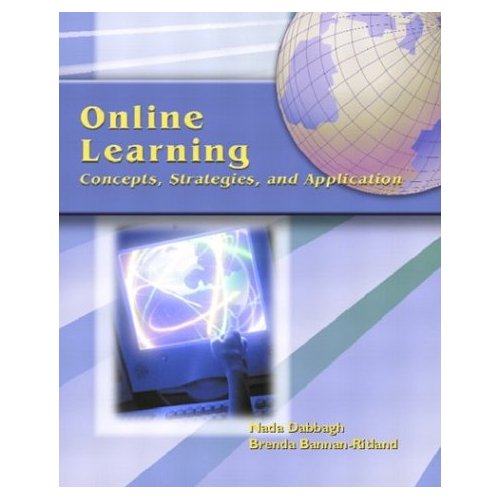 |
|---|
Through the use of a constructivist approach to teaching and learning, Dr. Van Rooij encouraged her students to explore areas in distance learning that were of particular interest to them. For me, that interest was in developing a sound understanding for web logs (blogs) and how blogs might be employed as tools for communicative language development in world language education. This interest is directly related to the early beginnings of a research project that will explore the use of blogs with beginning level Spanish students enrolled in the Basic Spanish Program at GMU. Implementing blogs in a handful of beginning Spanish courses will include both educating the adjunct faculty as well as the students in the pedagogical benefits of blogging as well as the basic knowledge of how to use blogs in education. To accomplish the task of educating faculty and students, I decided to use the final project for EDIT 611 as a vehicle for developing a distance learning training module that would provide post-secondary faculty with the "why" and "how" of using blogs in their courses. The final project was a collaborative effort of a 4-person team that included 3 of my colleagues in the course. The module can be found at http://mason.gmu.edu/~mferro/blogmod/index.
In a peer review of the project, I gained insight to two particular areas for improvement. First, the learning objectives are based on the goals of the blog module. I believe the module would be more effective if these objectives were stated from the learners' perspective. They should answer the question "What will the learner be able to do after completing this module?" If I were to continue to develop this module, I would begin each objective with "the learner will be able to...". The second area for improvement would be to include more adequate measures of assessing the learning objectives. Although we included a learner evaluation survey to measure the learners' attitudes and perceptions of the module, we did not include formative assessments of the objectives. Again, if I were to further develop this module, I would include these types of assessments as it is just as important to monitor learning the online learning environment as it is in a traditional classroom setting.
EDIT 705 |
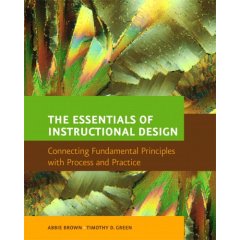 |
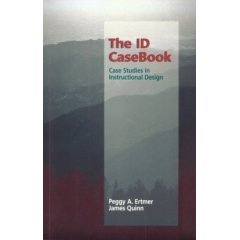 |
|---|
Building upon the work I had started in EDIT 611 for using blogs with post-secondary language learners, I decided to develop an instructional design prototype that would provide the students in the Basic Spanish Program with the "why" and "how" for using course blogs. The final product is a draft of an online instructional guide for students. It can be found at http://mason.gmu.edu/~mferro/blogguide/index . It is very possible that I will further develop this draft in order to use it in an ongoing research project with the Basic Spanish Program at GMU.
There were two major personal outcomes of this course. First, I believe I substantially increased my understanding of what an instructional design (ID) is supposed to do and how an instructional designer can develop a successful ID on a variety of topics in a broad range of learning environments. I would not have thought to include this type of ID in the web log project. I (wrongly!) assumed that instruction by the individual teachers would suffice. However, given that individual needs would indeed vary from student to student, and that many post-secondary instructors might not be experts in the use of blogs, I began to understand the importance of the process of ID. It begins with gathering data from the various stakeholders: the instructors, the administrators, the ID development team, and most importantly, the students. However, using the data to develop an ID is only half of the process. To ensure that the needs of the various stakeholders are being met, there must be ongoing formative assessments of the prototype. Lastly, because the needs of the stakeholders may change over time, summative assessments should be in place to ensure the sustainability of the ID.
The second outcome of this course involves my perception and understanding of an instructor's role in a distance learning environment. Since all of my coursework has taken place in a traditional classroom setting, I wondered how might the instructor's role of "facilitator of learning" transform itself in the distance learning classroom? I found that in the distance learning environment, instructor accessibility for one-on-one interaction with students is essential. In the absence of a physical meeting place, this interaction must somehow be established in an online environment. In my opinion, weekly activities on the discussion board section of a CMS (such as WebCT or Blackboard) will not suffice. Although additional work for the distance learning instructor, I believe one-on-one interactions via teleconference or email are a critical component that can make the difference between the success or failure of a distance learning course.
Return to top
EDUC 797 |
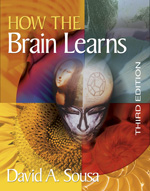 |
|---|
The topic of brain-based teaching and learning is beginning to gain popularity among scholars and researchers in various content areas of education. For the fields of world language education and second language acquisition (SLA) research, the current neuroscience research that focuses on language learning is of critical importance. New findings on the role of emotions with regards to long-term memory storage and memory retrieval may finally bring change to what is valued in the field of second language acquisition research. For decades the voice of sociocultural theorists has been stifled by those who believe that language learning is an individual process of mastering a symbolic system. This dichotomy was aptly noted by Pierre Bourdieu when he stated:
"As soon as one treats language as an autonomous object, accepting the radical separation which Saussure made between internal and external linguistics, between the science of language and the science of the social uses of language, one is condemned to looking within words for the power of words, that is, looking for it where it is not to be found.
It has only been in recent years that the published research in SLA has included a sociocultural approach to developing pedagogical models for language education. As I began this course, I wondered, how will this course help to shape my own developing epistemological lenses for SLA?
With this question in mind, I delved into an extensive exploration of sensory processing and the role that learning experiences and emotions play in long-term memory storage and retrieval. I presented my new found understanding of these processes in a class presentation. With this new knowledge, I began to question how I define individual intelligence and how I determine what constitutes an intelligent act by students in the language classroom. Is it their ability to pick the correct tense of the verb? Or, is it there ability to effectively communicate regardless of grammatical errors? And, how might the sensory experiences I provide in the language classroom help them to retrieve information when they need it? My final paper addressed these questions as I sought to determine the epistemologies that would frame my research.
Return to top
EDUC 882 |
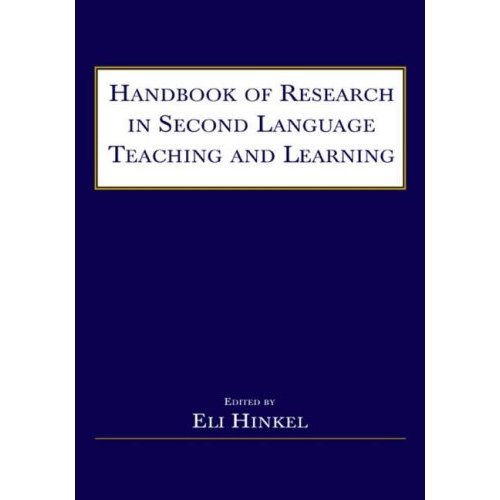 |
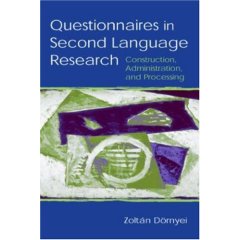 |
|---|
This course allowed me to continue my journey towards identifying the lenses from which I will ground my own research. In the process, I found myself considering the possibility of focusing my dissertation research on world language teacher education. Building upon my final project from EDUC 797 Brain-based Teaching and Learning, I sought to expand my position that the field of SLA research must recognize the value in studies that are based on sociocultural theories. For me, it means exploring how a language learner's social experiences influence his/her ability to commit new language content to memory and then be able to retrieve that new material in social situations. The readings in this course included the writings of Michael Byram & Anwei Feng on the topic of building intercultural competence; Suresh Canagarajah, who explores the integration of critical pedagogy in L2 teaching and learning; Thomas Ricento's position for considering the role of identity development in L2 learners; and the work of Margaret Hawkins regarding the need for establishing classroom ecologies that allow for "third spaces"--or the space that is needed for language learners to establish their own identities within the new language and cultures being learned. It was this particular set of readings that prompted me to look at a research project that I had been working on for the past year--through my newly defined sociocultural lens.
The research project involves looking at pre-service teacher perceptions and attitudes towards a newly revised student-teaching internship manual (STIM) for the CIFL program that I had helped to co-edit. I conducted multiple video interviews of pre-service teachers who shared their opinions of the STIM and its usefulness during their student teaching internship. I was also the videographer for the end of internship-portfolio presentations of two pre-service teachers. During the video editing process, I began to wonder about the role of teacher education programs in preparing today's educators to address the cultural, linguistic, and cognitive diversity of today's language learners. If we are to cultivate a generation of global citizen’s, how will language teachers create classroom ecologies where differing funds of knowledge are valued; where individuals are encouraged to make use the language and culture in hybrid spaces; and where the importance of the connection between language and identity is understood and nurtured?
To answer this question, I drew upon my experiences of working with Dr. Haley as we co-created a presentation of the STIM research which we co-presented at the 2007 conference by the American Council on the Teaching of Foreign Languages (ACTFL). I then reviewed my final paper from EDUC 797a (Brain-based Teaching and Learning) as I sought to expand my ideas to include the readings from this course in my final paper. This paper then became part of an article that I co-authored with Dr Haley. That article is now in the process of a double-blind review with Foreign Language Annals.
I believe that these two final papers (EDUC 797a and EDUC 882) are the early beginnings of my literature review as I would like to further explore this area of teacher education for my dissertation.
Return to top
EDIT 725 |
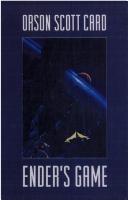 |
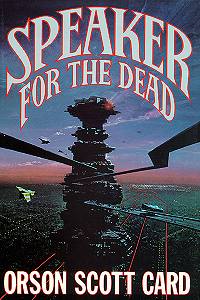 |
|---|
As the title suggests, this course provided me with the opportunity to delve into the issues of technology and diversity through a sociocultural lens. For the first project, I examined the media's portrayal of minority groups by evaluating a popular television show called Ugly Betty. In light of the popularity of this show and the call for more racially and culturally responsive television by Johnson and Kerew (1993), I sought to determine if the characters in Ugly Betty offer a balanced portrayal of Latinos and other minority groups, or if these fictional roles are a betrayal of the real positions that minorities hold in our society. Why is this important? There have been studies that have shown that the more cognitively engaged the viewer becomes with the content, the more likely s/he will identify with that content on a very personal level (Rivadenerya, Ward, & Gordon, 2007). For me, I wondered how will the minority stereotypes portrayed on television affect the attitudes and perceptions of students and teachers in the foreign/world language classroom?
This question resonated in my mind for several weeks. The answer became apparent during a session I attended at the November ACTFL conference. In a presentation by Krishauna Hines-Gaither of Salem University, I learned the stark realities of minorities in world language education. HInes-Gather led a discussion surrounding the latest NCES data on the number of minority students graduating with degrees in world languages from four-year post-secondary institutions. I was appalled to learn that so few minorities chose world languages as their major field of study at the post-secondary level. While it may not be fair to blame the media for the lack of minorities in the world language classroom, I could not help but wonder how my own teaching may have been influenced by the mainstream media's portrayal of minority groups. In the words of Gloria Ladson-Billings (2005) "there is a disconnect between what people espouse and what they actually do." Even though I have espoused the importance of addressing the diverse needs of my students, I began to wonder what I had been doing to truly address those needs. My final project in the course is a digital story (available on DVD due to large file size) that depicts my personal reflection and life experiences that led to this realization. As I completed this project, my desire to understand the complexity of the achievement gap among minority students in world language education grew. I look forward to my continued study of this topic next semester in EDUC 874--The Achievement Gap.
EDRS 811 |
|---|
The change in my thinking during my first year in the PhD program has been well documented in my previous reflections. There is little doubt that my previous ways of knowing have been challenged through the readings in critical pedagogy, sociocultural theory, and brain-based teaching and learning. My new lens includes a post-modernist/post-colonial perspective of the inequities that exist in world language education. I have also expanded my background in instructional technologies (IT) and the possible intersections between IT and world language pedagogy. By the beginning of the second year of my PhD program, I was ready to broaden my lens to include a positivist perspective, that of a quantitative researcher.
Once again, the change in my thinking as a researcher took place over several weeks as I began to make sense of simple statistical procedures. By the mid-term examination, I found myself looking at my research interests in terms of questions that could be addressed through the logical process of hypothesis testing. Anxious to take my newly developed skills out for a "test-drive," I completed my final project by looking for a gap in the research surrounding the effects of variables such as motivation, anxiety, and the use of learning strategies on the performance of beginning level language learners. In a brief review of the literature, it became evident that a dichotomy has emerged between those researchers who have focused on cognitive factors such as language learning disabilities (Dinklage, 1971; Sparks & Ganschow, 1993) and others who have studied potential psychological factors such as anxiety (Horwitz, Horwitz & Cope, 1986), motivation (Gardner, 1985; Gardner, Tremblay, & Masgoret, 1997) and choice of learning strategies (Oxford & Nyikos, 1989; Oxford, 2001). For my project, I decided to replicate a recent study (Huang, 2001) that examined the effect of learning strategy instruction with Taiwanese English Language Learners. My hypothetical population sample would be beginning language learners at a Mid-Atlantic University.
My research questions were:
RQ1.
Are student motivation, initial use of learning strategies, and pre-test language proficiency scores statistically significant predictors of post-test language proficiency scores?
RQ2: Is there a difference between experimental and control groups on the post-test scores, controlling for pre-test scores?
RQ3: Is the gain score for experimental and control groups the same across the levels of student motivation?
RQ4: Do ethnic groups gain equally from pre-test to post-test scores or are there differences among ethnic groups on post-test scores, controlling for pre-test?
Under the direction of Dr. Dimitrov, I selected an existing SPSS database as my sample data. My plan was to run Multiple Regression Analysis for RQ1 to predict future scores (on selected data collection tools) with future samples; to run an Analysis of Co-Variance for RQ2 and RQ4 to determine if differences exist in the post-test scores of the experimental and control groups while controlling for pre-test differences among ethnic groups; and to run a Two-way Analysis of Variance for RQ3 to determine if there are differences in gain scores between the experimental and control groups across motivation levels. Unfortunately, the database I used to run the different statistical tests did not adequately represent what real data would most-likely look like from such a study. This is evident in the results and findings sections of my final paper.
Since taking EDRS 810 and EDRS 811, I have had a strong belief that qualitative and quantitative research are equally important in education. Whether the researcher is aiming to gain an understanding of a phenomenon or is examining the relationship among variables, the ability to conduct both types of research is no longer an option. As I narrow my focus on a dissertation topic, I believe that I may use a combination of surveys and interviews to determine the attitudes and perceptions of pre-service world language teachers towards minority student populations. To further develop my skills as a researcher, I look forward to studying qualitative research techniques in EDRS 812.
Return to top
EDUC 890 |
|---|
This 15 week internship provided me the opportunity to work with Marty Abbott, the Director of Education, at ACTFL. After several conversations with Marty about my research interests, we discussed my role on two projects that would allow me to gain a national perspective of the current realities in world language education.
The first project appealed to my belief of using technology as a vehicle for creating what Bhabha (1995) referred as hybridity and that Moje et al. (2004) have defined as third space, or the space where informal and formal funds of knowledge (Moll & Greenberg, 1990) are afforded equal value. It is the area from which language learners can develop their own identity with the language and cultures being learned (Norton, 1997; Ricento, 2005). As part of a national awareness campaign to change the way Americans view world languages and cultures, this project's focus was to generate awareness with PK-16 language learners through a national contest called "Not Just a Language Class." Contest submissions are in the form of a two minute video (pod cast) where language learners shared how they use the language outside of the classroom. My tasks for this project were:
- To collaborate with technology support team at the Center for Language Education and Research (CLEAR) at Michigan State University on the development of the contest web site. I was able to secure the domain name actflvideocontest.org, and the site can be viewed at: http:www.actflvideocontest.org
- To create various documents for the contest web site, such as the submission guidelines, judging criteria, technology tips, consent forms, FAQs, and the popular vote instructions
- To create a rubric with judging criteria and to assist Marty in judging the video submissions
- To verify consent forms of all the finalists prior to a nation-wide online popular vote
- To respond to any email inquiries about the contest
There were many lessons learned from my work on this project. First, I learned that you can not underestimate the technical savvy of the K-16 population. Prensky (2001) warns that we are in an age of digital natives, or the generation of learners who have be born in the era of digital technology. Forgetting the technology skills of this generation, we had initially decided not to use any type of control (such as a voter registration) for the popular vote. We thought that this additional process might turn potential voters away. We relied on the use of "cookies" to monitor one vote per computer. Unfortunately, after less than an hour, our system had been corrupted. Students were able to disable the cookies and create a short program for repeating electronic votes. At one point, several videos were generating hundreds of votes per minute. Needless to say, we had to shut down the popular vote for several hours in order to institute a voter registration system that allowed one vote per email address.
Second, I learned that the use of technology can generate excitement with language learners when they are given the opportunity to express themselves in a way that is not prescriptive. Yet, I had hoped that the videos would reveal more than they actually did. Many of the students used the videos to create skits in a restaurant, a supermarket, or a hospital. Others used the videos to highlight their interest in the foods, festivals, folklore or fashion (the 4Fs) of the target cultures. Although some of the connections were clearly very meaningful to the students, I felt that many of the videos lacked an actual personal connection. Now, as I reflect on this project, I wonder if maybe my expectations were simply unrealistic. But I can't help but wonder if perhaps there is more that we could be doing in teacher preparation programs. Can we educate world language teachers to teach more than the 4Fs? And, how can we measure any progress in the development of third spaces in the world language classroom?
The second project was part of the National Security Language Initiative (NSLI) that seeks to gather data on how language program supervisors across the country use enrollment data when making decisions about their programs. I collaborated with Marty and two researchers from SWA Consulting to create an interview protocol that I used to conduct telephone interviews with program supervisors in each of the 50 states. The data that I collected from the interviews will now be used by SWA as they begin to collect that actual enrollment data. Part of the goals of the NSLI project is to determine our nation's current language capacity as well as to provide professional development that best serves this population of educator/administrators.
Having the opportunity to speak with language supervisors and specialists across the country was enlightening. I was able to see a full spectrum of programs, funding issues, and the impact of the No Child Left Behind (NCLB) law on world language education. While some state's world language supervisors have been able to lobby for funding to create new innovative programs that include critical needs languages, other states do not have the funds to staff a world language supervisor. In those states, there is little if any advocacy for world languages at the state level. I found that part of the reason is due to the pressure that states are under to meet NCLB requirements. Because world languages are not directly tied to NCLB funding, the promotion of world languages and funding for new programs is left to the individual counties and local educational areas (LEAs).
I finished this project with mixed emotions. While I admire what many states are doing to increase and improve their world language education programs, it was very disheartening to learn that quite a few states have no world language representation at the state department of education. With no voice at the state level, how will world languages grow? How will legislators learn about the research that shows that studying a language increases overall cognitive abilities (Genesee & Cloud, 1999; Collier & Collier, 2003; Stewart, 2005)? It is clear that the voice for world language education must come from the field. Part of teacher education should also include training teachers to be advocates, not just for their students, but for their programs.
EDUC 994 |
|---|
Teaching at the graduate level has proven to be a valuable experience. My desire to work with pre-service and in-service teachers was confirmed as I spent 14 weeks as the instructor for "Teaching Reading and Writing in Foreign/World Languages." This experience also allowed me gain a clearer path towards my dissertation. My full reflection for this internship can be accessed here. Additional course artifacts include the the syllabus that I revised specifically for this semester. The revisions included two new articles in the course reading packet, a new project based on a WebQuest that I created in EDIT 725, and updates to the course rubrics. Also, before the students formed groups to complete the WebQuest project, I conducted a needs analysis in order to gather information on their background knowledge as well as their individual goals for this course.
EDUC 874 |
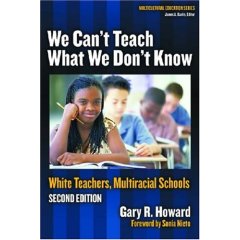 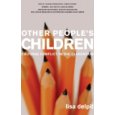  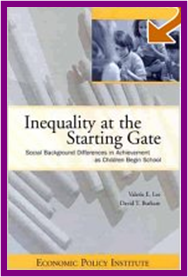 |
|---|
Studying the achievement gap (AG) over 15 weeks allowed me time to investigate how the AG has been defined historically as well as some more current definitions. How we define the AG is important because the terms and parameters we use to define it in turn affects the solutions we create to narrow it. For example, if we limit our definition of the AG to differences in test-scores, then our solutions will focus on creating instructional materials to improve those scores. If, however, we define the AG as it should be, as a socio-economic issue, then we will have to broaden the focus of our solutions. As I gained a broader perspective of the AG, I began to connect my new understanding of the AG to my field by looking at the relationship between language minority students who are in placed in English for Speakers of Other Languages (ESOL) programs and students who are considered Heritage Language Learners (HLLs) in the foreign/world language classroom.
Our course readings and class discussions initially focused on looking at the AG in terms of "the individual" vs. "the structure of inequality." As I read the Gloria Ladson-Billings' 2006 AERA presidential address, I realized that merely looking at test scores between Black and White students and the factors that are believed to affect these test scores results in solutions that address the symptoms of the AG while doing little to change the system that has produced and reproduced what Ladson-Billings refers to as our educational debt. Ladson-Billings (2006) criticizes a narrow definition of the AG, such as that conducted by Jencks and Phillips (1998) that simplify our understanding of the AG by looking only at Black/White test score differences, differences in Black/White family income, and differences in the years of education of Black/White parents. Such a narrow lens has often resulted in the development of solutions based on deficit models that seek to educate minority groups so that they can act more like their successful White middle-class counterparts rather than place equal value the various cultural differences among our diverse minority populations. According to Ladson-Billings, deficit models address symptoms. They do little to increase the political or social power of minority groups, which is where we must start if we are to reverse our growing educational debt.
As the semester progressed, so did my understanding of the complexity of the AG. I read about how gaps in opportunity and access exist before students even begin school (Lee & Burkham, 2002) and that cultural dissonance between home culture and school culture impact the students' perceptions of the American educational system and their place in that system (Ogbu & Simons, 1998; Carter, 2005). As I read about effects of teacher expectations and perceptions of minority students and how these perceptions reflect issues of social dominance and social positionality (Howard, 2006), I began to make connections between these readings and my passion for addressing the cognitive, linguistic, and culturally diverse needs of today's language learners. I selected the work of Freeman, Freeman and Mercuri (2002) as an optional course reading because I wanted to look at their model for empowering minority student populations by helping them develop strong literacy skills. At the same time, I was teaching EDRD 620--Teaching Reading and Writing in Foreign and World Languages. I began to wonder where the ESOL students in the Freeman, Freeman, and Mercuri (2002) book would fit in today's world language classrooms.
My final paper in the course focused on language minority students and their achievement in world language education. My research for this paper extended beyond the course readings. I became familiar with the work of Reagan and Osborn (1998), who have written on role of power and authority in foreign (world) language classes and how language teachers have used their knowledge of the target language to produce and reproduce their own power and authority in their classrooms. This power has been increasingly challenged by heritage language learners who in many instances, have a higher proficiency in the target language than their teachers. Instead of empowering these learners by valuing their funds of knowledge (Moll & Gonzalez, 2004; Moje et al., 2004), many language classrooms have become yet another place where "the power relations that characterize the wider society...make minority students' academic failure inevitable" (Cummins, 1986, p. 33). Looking at heritage language learners through this critical lens has led me to revisit many of the same questions that I had asked myself at the end of my very first semester in the program. What is the role of language, power, and social capital in world language education? Whose languages and cultures are valued? And, more closely related to my work teaching EDRD 620, how can I better prepare teachers to develop their students' literacy skills at a time when the field is so focused on the development of speaking and listening skills? As I begin the last two semesters of my coursework, I shall continue to seek ways in which my research will address social justice issues that exist in the foreign/world language classroom.
EDUC/EDRS 797a |
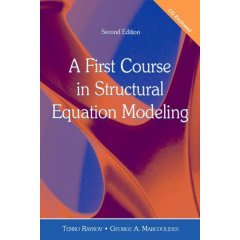 |
|---|
After a semester of researching the achievement gap, working on a national research initiative with ACTFL, and teaching EDRD 620, taking structural equation modeling as a 4-week intensive summer course was an unusual yet rewarding change.
Why take a course in structural equation modeling (SEM)? When I decided to make this course a part of my program of study, I did not know for certain if my research would include path analysis or exploratory/confirmatory factor analysis. What I did know is that these types of quantitative analyses would be difficult to learn on my own. I decided that even if my dissertation research did not include SEM, having knowledge of how these types of studies are constructed would contribute to my being a better critical consumer of the existing research in my field. This is particularly true regarding my interest in how and why teachers use technology and whether or not these uses help students identify with the target language and cultures. When we explore how and why teachers use technology, much of what we are seeking to measure are non-observable, latent variables such as their beliefs about teaching and learning, beliefs about instructional technology, self-perceptions about technology capabilities, and self-efficacy to effectively use technology in their language classrooms. In order to measure these variables, we need to determine if survey questions are good predictors of each variable. And, once we have a reliable instrument, we need to then look at the relationships between the variables.
Through the course readings and our class discussions, I learned that the analysis of latent variables is often done using multiple regression analysis for ANOVA purposes. The problem with this approach is that it does not consider the random error of the independent, or exogenous, variables (Raykov & Marcoulides, 2006). An alternative analysis that is able to account for the random error of independent variables is structural equation modeling (SEM). According to Raykov and Marcoulides (2006), the benefits to using SEM extend beyond the consideration of random error of independent variables. Using SEM methods also allows the researcher to hypothesize possible relationships among variables a priori, thus improving the power of the test. These hypothesized relationships may include both direct relationships between variables as well as indirect relationships that are mediated through intervening variables (Raykov & Marcoulides, 2006).
To demonstrate my new found understanding of SEM, my final project in this course was a simulated study that was based on the previous research of Wang, Ertmer, and Newby (2004), who sought to determine if vicarious learning experiences and goal setting had a positive effect on pre-service teachers' self-efficacy for integrating technology in their classrooms. They used exploratory factor analysis to first establish validity and reliability of the survey instrument. They then identified two constructs that were connected to the survey questions. The first was external factors such as the availability of technology, support staff, and the level of acceptance for using technology by others in the department and/or school. The second construct was an internal factor related to the teacher's self perception of his/her technological capabilities. The intervention was a two hour lab session where one control and three experimental groups were asked to explore one or both of two technologies: VisionQuest and/or WebQuest. Specifically, the researchers posited that the teaching simulations provided in VisionQuest would serve as vicarious instructional experiences and that the goal-setting process in the WebQuest activity would both positively impact the pre-service teachers’ self-efficacy towards technology. The results showed that while vicarious learning experiences and goal setting had individually contributed to pre-service teacher self-efficacy, the combined effects of both variables yielded the largest difference. The researchers call for replicated studies that allow for a longer treatment period and that include participants from different teacher education programs.
My simulated study extended the work of Wang, Ertmer and Newby (2004) by looking at the effects of macromedia training on the self-efficacy of pre-service world language teachers towards instructional technology. Although my data set was not "real" I was able to practice the statistical procedures for exploratory and confirmatory factor analyses using Mplus. In writing the final paper, I was able to better understand how researchers operationalize non-observable variables in order to determine if an intervention has had an effect.
Although I believe taking this course was beneficial, I finished the course wondering how I might use SEM in my dissertation research. With my interests now focused on pre-service teacher education, I may not be able to work with large samples of participants that are needed for SEM analyses. As I progress towards the last semester of my coursework, I find that my developing research questions about pre-service world language teachers are process oriented and therefore more suitable for qualitative research. For example, how do pre-service teachers transition from the licensure coursework to their own classrooms? What challenges do they face? And, how are they able to overcome these challenges? My hope is that the last four courses in my program of study will allow me to find the intersection between instructional technology, world language teacher preparation/education, and issues of social justice in the foreign/world language classroom.
EDRS 812 |
|---|
If someone had told me that the most challenging course in the program would be EDRS 812, and not EDRS 811, I would not have believe it. Joe Maxwell's qualitative research course is a bear. Keeping up with the course readings and writing the researcher memos are tough, but they are not what challenged me the most. The real challenge came with designing, conducting, and reporting on an actual qualitative study. Having read several published qualitative studies, I was under the impression that qualitative research was easy. Perhaps this is because good qualitative researchers know how to tell the stories of their participants or a particular phenomenon with such clarity that the untrained eye misconstrues this clarity for simplicity. Qualitative research, I have since learned, is anything but simple.
My earlier work in EDRS 810-Problems and Methods in Educational Research in the spring 2007 semester prepared me to write the methods section of a qualitative research paper. But, I soon realized that I had little knowledge of how to build the actual design of a qualitative study or the experience/knowledge of how to analyze qualitative data. In the fall of 2007, I had dabbled with coding and categorizing data from a pre-workshop needs assessment survey completed by mainstream teachers from a rural Virginia county who have had an increase in ESOL students. Though that experience was beneficial, it was limited. What I did not realize until taking EDRS 812, is that in qualitative research, the researcher is often the data collection instrument and the actual process of collecting interview or survey data may serve as an intervention. With these new realizations came new challenges, such as how best to address researcher bias and when to conduct follow-up interviews with the participants.
My prior views of researcher bias were that it posed a threat to the validity and reliability of a study and must be addressed fully in order to minimize that threat. Only seeing researcher bias in this negative light prevented me from understanding the strengths that my background knowledge and experiences bring to a qualitative study. My academic, professional, and personal experiences shape the way that I think, the way that I hypothesize about what might plausibly explain a particular phenomenon. The suppositions that I make about my participants may be a threat to the validity and reliability of my findings, but I have learned that I can limit that threat by explicitly expressing my potential biases and by having a willingness to look for alternative explanations that may challenge my previous thoughts. Writing my research identity memo for the course allowed me to look at exactly how my own experiences as an adult language learner, a language teacher, and more recently as a language teacher educator, have contributed to my knowledge and understanding of the role of power and authority in the language classroom. I reflected on these experiences in order to determine what teachers (and I) can do to value all of the languages and cultures that are represented by the students in their (and my) classroom.
The major project for this course is to conduct an actual qualitative study. My goal for the research project for this course was to gain an understanding of the beliefs and perspectives of foreign/world (FL/WL) language teachers towards teaching intercultural communicative competence (ICC) and the role of technology to do so. This goal was connected to several course readings from Dr. Fox's EDUC 853-World Perspectives in Teacher Education, which I was taking concurrently with EDRS 812. I had made strong connections with the work of Michael Byram on ICC and a study done by Lies Sercu's (2006) that had applied Byram's ICC model to the various ways that FL/WL teachers say they teach culture. I used the Sercu study as part of the framework for my course project. I interviewed 5 world language teachers who were either completing their 15-week student teaching internship, or who were in their first year of teaching full-time. Soon after I began to conduct the interviews, it became apparent that becoming a good qualitative researcher would take practice.
As I transcribed the interviews and began to analyze the data, I found that I missed many opportunities to ask follow-up questions. It also became clear that I should have conducted follow-up interviews because the data analysis left me with more questions than answers. I realized that the interview process can have the effect of an intervention after I received an email from one of the participants. In that email, she stated that our interview had prompted her to reflect on her own teaching and make changes in the way she had been teaching culture. I wondered how many of my other participants did something similar to this. My inexperience to conduct quality interviews and follow-up emails left me struggling to make sense of the data. Writing the final report was more difficult than I ever would have imagined. Yet, that experience left me wanting to do more qualitative research.
In addition to learning that I have a lot to learn, this project also left me wondering why researcher bias is not addressed more fully in all educational research studies. After all, how I write my research questions, whether related to variables or a phenomenon, is directly affected by my academic, personal, and professional experiences. I am beginning to question the simplicity of some quantitative studies that attempt to reduce complex constructs to a few "measurable" variables. The reality is that educational research is complex and rather messy. At this point--my last semester in my program of study, I feel as though I should have defined myself as either a quantitative or qualitative researcher, but I do not see myself fitting neatly into a particular research paradigm. As I come closer to finishing my program of study, I am leaning towards taking one more class--Mixed Methods in Educational Research.
EDUC 853 |
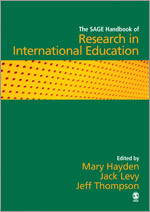 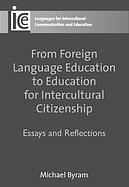 |
|---|
This new course to the doctoral program played a vital role in my thinking as I work towards defining my dissertation research. As I gained a better understanding of the history and current state of international education, I began to develop my own definition of what it means to be internationally minded or to have developed intercultural communicative competence (ICC). In researching these two terms, I found that the term international mindedness has roots in the International Baccalaureate Program and the term ICC dates back to the work of Dell Hymes (1971) on communicative competence and more recently the work of Michael Byram on intercultural communicative competence. Essentially, both of these terms extend beyond the basic knowledge of other languages and/or cultures. To be internationally minded or to have ICC, one must possess the communicative language skills and the critical thinking skills to solve problems and to serve as cultural mediators. As I studied the history of these terms and the history of FL/WL education both in the U.S. and around the world I found myself thinking about how ICC might be the vehicle for world language teachers to change how they teach target language cultures. If teachers were committed to facilitating the development of ICC with their students, then they may just be able to move beyond teaching cultural facts and tidbits. From this train of thought spurred another. What does this mean for world language teacher preparation programs? Can we assume that all world language teachers have already developed their own ICC?
Michael Byram has written extensively on ICC. In his 2008 book From Foreign Language Education to Education for Intercultural Citizenship, he cautions against such assumptions by saying that developing ICC requires more than being bilingual or multilingual. A historical look at world language education shows that the hegemonic models for linguistic and social competencies are often based upon one dominant dialect and one dominant culture. He states that the phrase “acting as a mediator” in our definition of ICC is important because it distinguishes the “intercultural from the bicultural since the latter need not involve the act of mediating” (Byram, 2008, p. 68). As we seek to employ teachers from around the globe, we must keep in mind, that “it is possible that biculturals are ethnocentric in two cultures, just as monoculturals can be ethnocentric in one (Byram, 2008, p. 72). For me, Byram’s work provided both a national and international history of FL/WL education as well as a framework for understanding the concept of ICC. I was able to use this framework as a springboard from which I could then connect many of the course readings from EDUC 853. By reflecting on my own experiences as a language leaner and a language teacher, I wondered what does it mean to have ICC and how does one develop it? What can teacher preparation programs do to provide FL/WL teachers with the opportunities and experiences to develop their own ICC? How might language teachers facilitate the development of their students' ICC though classroom practices?
I am grateful to Dr. Fox for her flexibility in allowing me to do a final project where I was able to investigate the recent research and publications regarding ICC, world languages, and teacher education. She also encouraged me to use my new "international lens" to re-examine the data that I collected for my qualitative study in EDRS 812. Using the interviews that I conducted with five language teachers who were either completing their 15-week student teaching internship, or who were in their first year of teaching, I sought to understand the beliefs that they currently hold towards teaching target language cultures, the challenges they experience when teaching cultural lessons, and how these beliefs and experiences influence their instructional practices.
In my final paper for the course, I reported that all five of the participating teachers held strong beliefs about the importance of teaching culture. However, each teacher mentioned that finding time in the required curriculum and/or classroom management posed significant barriers to implementing creative cultural lessons with their students. I also found that while three of the teachers shared cultural lessons that contained evidence of teaching for ICC, two of the teachers were most likely still developing their own ICC. Interestingly, all of the teacher-participants were enrolled in the same teacher licensure program. These findings provide a small window from which to view some of the realities that FL/WL teachers face when they transition from licensure coursework to the classroom. With a specific focus on teaching culture for ICC, my small study has shown that there is a wide spectrum of diverse needs that pre-service teachers bring to licensure programs.
As I finished this course, I reflected on the kind of educational research methods that I believe will allow me to expand upon the current scholarship on intercultural communicative competence in FL/WL education. Having read both qualitative and quantitative studies on ICC, I believe both methods contribute equally valid and valuable findings. Yet, I think that if I am to truly make a difference in how teachers teach culture, my research will have to include more involvement from my participants. This is because I believe that it is only through collaboration and reflection that true change can occur.
EDUC 893 |
|---|
As with many of the courses I have taken, EDUC 893 allowed me to gain a historical perspective of a new lens in order to better understand the current conversations among scholars in a particular field. For this course, the field was educational anthropology and many of the current conversations that we read about and discussed in class pertained too new approaches and new research designs for conducting educational research through an anthropological lens. I could not have taken this course at a better time in my doctoral studies. As noted in the other two reflections for the other courses that I took this semester, I had been questioning the "kind" of researcher that would I become. Using the topic of my qualitative study from EDRS 812, I began to ask myself several questions. For example, through what lenses would I seek to better understand how language teachers teach culture? How would I evaluate my data in order to determine if and how today's language teachers are teaching for intercultural communicative competence? And, what are the objectives of my research and how important are they in constructing my theoretical framework? Will I stop at meeting the intellectual objectives of contributing to the existing scholarship on my topic? Or do I want to improve teacher education for pre-service teachers by working collaboratively with the participants in my research studies to co-create change?
Looking critically at early investigations of culture, I realized that much of the seminal work by Malinowski, Mead and Spindler followed a positivist linear model. This model of observe-analyze-conclude-report was favorable during the late 1800s and early 1900s because it was believed that researchers could maintain their "neutrality" while still experiencing the cultures they wished to study. There were several problems this this approach. First, it is impossible to "maintain neutrality" as a researcher. And, as I mentioned in my reflection from EDRS 812, researcher bias does not have to be viewed as a negative. Another problem with this positivist approach is that that power dynamic between the researcher and participant was often skewed in favor of the researcher. What really opened my eyes to this power dynamic came in the words of Frederick Erickson, when he said "Malinowski lived next door to the natives, he didn't live with them" (Erickson, 2006, p. 242). The distance, both physical and metaphorical, between researcher and those s/he observes influences how observations are interpreted and reported. This distance may have helped to keep the research "clean and tidy" (in the words of Margaret Eisenhart), but it did so at the expense of those being observed.
The research proposal that I wrote as the final paper for this course was a valuable experience. I had the opportunity think about how I would logically create the theoretical framework of my dissertation proposal by first writing this "mini-version" and getting feedback from Dr. Osterling. When I began to write the paper, I found that I could not help but make connections to the course papers, class notes, and portfolio reflections from EDUC 800--Ways of Knowing, EDUC 797--Advanced Topics: Brain-based Teaching and Learning, EDUC 874--the Achievement Gap, EDUC 853--World Perspectives on Teacher Education, and my qualitative study from EDRS 812--Qualitative Methods in Educational Research. As I wrote, I began to see how my doctoral coursework has really become a weave that will eventually guide and support the research design of my dissertation study. The link to the research proposal above includes Dr. Osterling's comments--for which I am very grateful.
EDUC 897 |
|---|
As the fall 2008 semester progressed, so did my focus on FL/WL teachers' perspectives on teaching culture and their use of technology to do so. As I worked on my qualitative study for EDRS 812, I was also developing my own definition of culture in EDUC 893 and in EDUC 853 how that definition should be applied to FL/WL education on a global level. I started wondering if and how language teachers might use cultural lessons to prepare their students to think critically, not only about cultural differences, but also about social issues on an international scale. My original plans for this independent study no longer seemed "to fit" the direction in which I found myself going. I knew I had to complete this course, but I did not want to waste an opportunity to continue to develop my thinking. I was faced the dilemma of rushing to finish my coursework in order to move towards the proposal class, or taking the time I needed to explore these new directions of interest. Slowing down and watching other doctoral students pass me in the program was not an easy decision. Yet, it is one of two critical decisions that I made in the spring 2009 semester. The second was to audit Dr. Maxwell's course, Mixed Methods in Educational Research.
I am very thankful for Dr. Sprague's flexibility, guidance, and patience as I struggled to re-frame this IS within the general framework of the original plans. What we decided upon was a pilot study on how language teachers use technology through a new lens. This new lens included an integrative mixed methods design, which would allow me to investigate how their use of technology reflected the current Standards of Foreign Language Learning. For the IS, I would complete the original planned course readings as well as several additional readings that applied to the development and design of this study. I would develop the data collection instruments, complete and submit the HSRB protocol application, and write a full proposal for the study, including a literature review and methods section.
Before I began work on the proposal paper, I created a design map using the template from Dr. Maxwell's EDRS 812 course. I find that this template has helped me to stay focused on my research questions as it is easy to drift off course when doing the literature review or developing the research instruments. It has also served as a reminder for me to consider how my interpretations of the data may be wrong.
As I continue to collect and analyze the data from this study, I believe that I am gaining a clearer path towards my dissertation research. I have already made several rookie researcher mistakes in the recruitment process and with my survey questions. Yet, I am thrilled that I have had the opportunity to practice my skills as a researcher prior to finishing my coursework. If I had chosen to rush through this IS, I would not have had these experiences, which I believe will make me a better researcher in the future.
EDRS 797b |
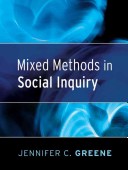 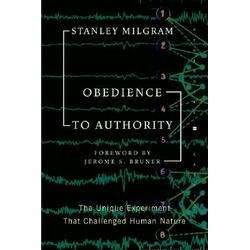 |
|---|
The final course in my program is not officially on part of my Program of Study. Yet, this course allowed me to resolve a minor identity crisis that reared its ugly head as I was completing what should have been my final semester of coursework. Unable to figure out my identity as a researcher and struggling to make the IS with Dr. Sprague truly meaningful, I made the decision to take a semester to figure things out. I decided to audit Dr. Maxwell's Mixed Methods course. My decision was based on a comment made by Ann Drobnis (another doc student who was also finishing up her coursework in the fall). She took both qualitative methods and mixed method courses with Dr. Maxwell simultaneously and said that the mixed methods course greatly helped her frame the design of her research through a lens that represented her beliefs as a researcher. This sounded like what I needed.
Prior to the mixed methods course, my assumptions were that mixing methods meant that researchers collected data using a variety of instruments as a means of triangulation. I learned in both EDRS 810--Problems and Methods in Educational Research and EDUC 893--Seminar in Educational Anthropology, that multiple sources of data allow researchers to address validity and reliability issues. The use of the term "mixing methods" in this sense did not really refer to mixing anything. Although both quantitative and qualitative data were being collected and analyzed, the majority of published studies that I have read show the researcher addressing each form of data collection and analysis separately. I cannot explain what bothered me about the separate treatment of the data, but to me, something did not seem "right."
The course readings opened my eyes (and mind) to new ways of viewing mixed methods research (MMR). Initially, I became frustrated with the recent scholarly writings on MMR that essentially provide design models that are prescriptive, limited and/or favor one research method over another. For example, Chatterji (2005) calls for a "contextually grounded and suitably-timed implementation of experiemental designs" (p. 15) that include both qualitative and quantitative measures for evaluating educational programs. This design model for MMR looks good on the surface as Chatterji says that the research methods are intended to "broaden the understanding of the program's theory, and relationships among context, input, process, and outcome factors as they operate in situ" (p. 22). But what about processes and phenomena that are not program-related? If they are not part of the design model, how will they be recognized as having equal value in the findings? In another MMR design model, Raudenbush (2005) recognizes the need to collect data using a variety of instruments and strategies, but the tone of his article undisputably places more value on quantitative research methods. In essence, Raudenbush proposes the collection of qualitative data to select samples that will provide the most likely outcomes being sought in the study. Reading these articles, I found myself frustrated at the inability for scholars to place equal value on qualitative and quantitative research.
I began to find resolution in the 1972 writings of John Platt. Over 37 years ago, Platt recognized that researchers had been placing too much emphasis on scientific methods. In doing so, Platt says that researchers have stopped seeking alternative explanations (alternative hypotheses) based on logical explanations. He notes that we have become so fixated on finding scientific evidence that we have stopped thinking about the problem in terms of plausible explanations based on our knowledge and past experiences. He notes that "the method-oriented man is shackled; the problem-oriented man is at least reaching freely toward what is most important" (p. 214). According to Platt, what is most important is the ability to put aside our old methods in favor of new ones that might offer alternative explanations using what he calls "strong inference". In Dr. Maxwell's terms, we as researchers have to ask ourselves "what else might be going on here?"
My identity crisis slowly disappeared as I continued to read the work of Lee Shulman (1986) on the complexity of educational research. Shulman notes that even quantitative studies are not free from what he calls "normative choices" made by the researcher. When designing a study, whether it be qualitative or quantitiative, researchers make choices about their participants and criteria such as time limits for interventions. Qualitative researchers are required to address their normative choices, but these are rarely discussed in terms of the "values or norms underlying their commitments" by quantitaitive researchers (Shulman, 1986, p. 70). I began to wonder if Platt's (1972) ideas about the "method oriented man" might apply to some quantitiative researchers in education. Like Platt, Shuman made a call for new methods of research. But, he differed from Platt as he explicitly warned against the adoption of prescriptive models (such as those that were later proposed by Raudenbush and Chatteji). Though Platt and Shuman helped my mixed method researcher identity take shape, I was still a bit anxious about the approach to MMR that I might employ. How would I reconcile the differing ideologies between qualitative and quantitiative research?
Jennifer Greene's (2007) textbook Mixed Methods in Social Inquiry, offers an integrative approach to conducting MMR that resonated with me. She calls for MMR that takes a dialectic stance as "the paradigms themselves are historical and social constructions and so are not inviolate or sacrosanct" (p. 69). She says that in social inquiry, paradigmatic differences are important and "should be respectfully and intentionally used together to engage meaningfully with difference, and through the tensions created by juxtaposing different paradigms to achieve dialectical discovery of enhanced, reframed, new understandings" (p. 69). Although Greene does provide some examples of her integrated design, she notes that it is up to the researcher to decide. After almost 4 decades (including the paradigm wars), I believe that Greene's dialectic stance is an answer to Platt's call for problem-oriented researchers who are willing to teach themselves new methods in order to logically develop alternative explanations/hypotheses.
Soon after the course began, I found myself revisiting my qualitative study and my final papers from last fall. As I conceptualized a potential pilot study, I realized that I am far from fully understanding how to implement Greene's integrative approach. Yet, the connection that I have made with this approach is undeniable. I am now excited (and nervous) to move forward by conducting this pilot as I believe I need to gain some experience with this approach before proceeding to my dissertation research. This pilot is part of my IS with Dr. Sprague. The proposal for the study, including the methods section, can be accessed here.